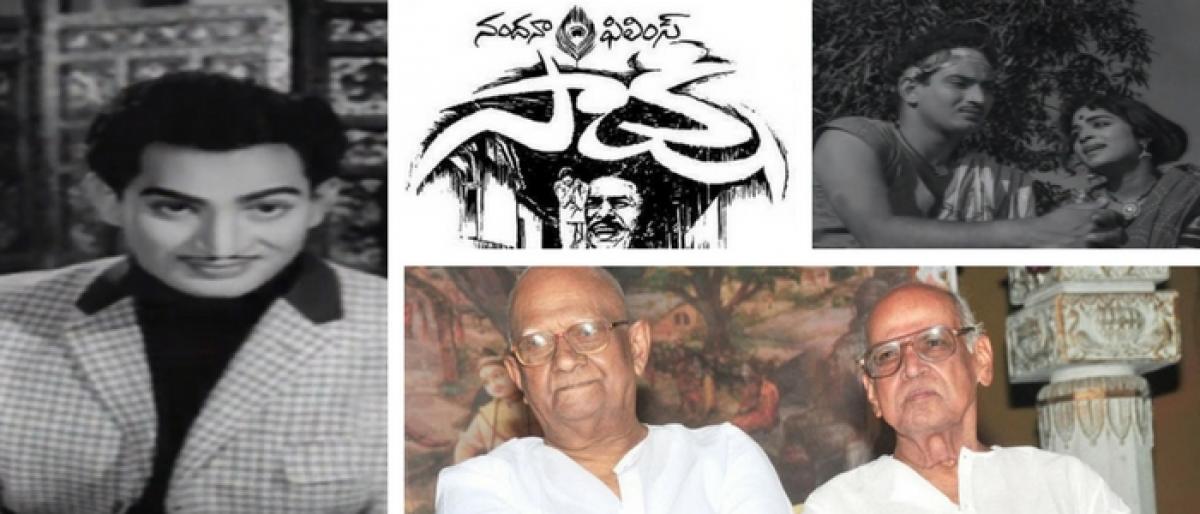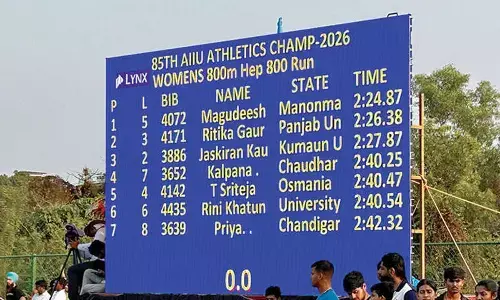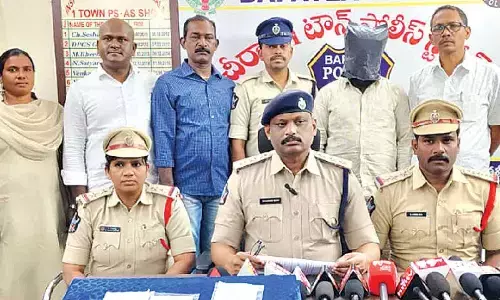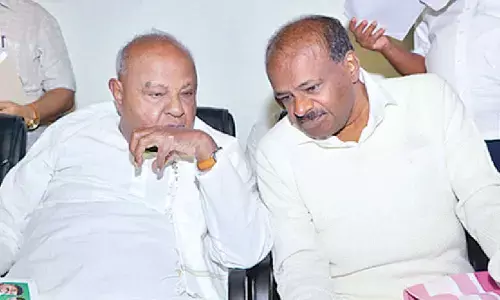50 glorious years of Sakshi

It was July1, 1967, a relatively small film called ‘Sakshi’ with relatively less known actors was released. There wasn’t much buzz about the film, but industry insiders had their interest piqued as a renowned artist was wielding the megaphone for the first time and his best friend a screen writer and novelist penned the script.
New actors, new director, unique storyline, and shot in the record time of less than 20 days, yet ‘Sakshi’ stood out in the hall of fame of Telugu cinema, and marked the beginning of a legendary director Bapu
It was July1, 1967, a relatively small film called ‘Sakshi’ with relatively less known actors was released. There wasn’t much buzz about the film, but industry insiders had their interest piqued as a renowned artist was wielding the megaphone for the first time and his best friend a screen writer and novelist penned the script.
Initial response from the audience was lukewarm but the movie stood strong with word of mouth, it ran for about seven weeks. Not only the movie garnered financial and critical acclaim, it also won laurels at Tashkent Film Festival in 1968. The movie which celebrates its diamond jubilee this year introduced, Bapu (Sattiraju Lakshmi Narayana) as director and he made an indelible mark in the annals of Telugu film industry.
His friend for life, Mullapudi Venkata Ramana (Ramana), who entered film industry with ‘Mooga Manasulu’ (1964) was already making waves as a screen writer and the duo decided that it was time they made a movie together. While Bapu took the mantle of director, Ramana penned the story and dialogues.
In his autobiography, ‘Koti Kommachchi’ Ramana says that they (Bapu and he) liked Gary Cooper starrer ‘High Noon’ and developed the story of ‘Sakshi’ based on the 1952 released western film.
The duo wanted to make a small film without any stars; they roped in Krishna, who was then only four movies old as the main lead and Vijaya Nirmala as the female lead. She was relatively a bigger star, after having played a lead role in legendary auteur-director BN Reddy’s ‘Rangula Ratnam’ (1966). Rest of the actors were theatre artistes, barring Jagga Rao, who played the role of the antagonist.
Ramana also took the mantle of finding funding for the film, and he approached Vijayawada-based distributers with the project. It was they who suggested Ramana to direct the film. However, he made it clear in no uncertain terms that he was only a writer and the project will only go ahead with Bapu as director, such was the loyalty of Ramana.
However, he agreed to their suggestions for top grade technicians; thus, legendary composer KV Mahadevan and cinematographer PN Selvaraj became part of the project. The duo roped in the services of their friend and lyricist Aarudhra to pen songs for the film
The film was shot in less than 20 days in locales in East Godavari district. During the time of the shoot, Bapu and Ramana were so impressed with a local folk band, that they whisked the band all the way to Madras (now Chennai) and used the recording as background music for titles.
The film also earned distinction for being creative in publicity; Bapu, who earlier worked as an advertisement designer, came up with many innovative concepts at that time. One such concept which grabbed eyeballs as well as criticism was adding the line “20 rojullo teesina chitram” (the film which was shot in less than 20 days) in the posters.
When this came to the notice of Chakrapani, one half of legendary producer duo Nagi Reddy and Chakrapani, he commented, “20 rojullo teeste 20 rojule aaduddi” (the film will only run 20 days).
Ramana admitted in his autobiography that Bapu told the distributers that he was not very happy with the output, and if he had time and money he would have pruned few scenes, much to the astonishment of producer. However, the distributors, who liked what they saw, brought the film.
Upon release, critics loved the film and performances of Krishna, Vijaya Nirmala and a new actor Ranga Rao were hailed by critics. The film gave an identity to Ranga Rao and since then, he was called as Sakshi Ranga Rao.
Buoyed with the commercial and critical success of the film, Bapu-Ramana named the year as ‘Saskhi nama samvatsaram’. With the move started the era of Bapu, and we Telugu audience were treated with cinematic and visual wonders from the artist-turned director.
Though the duo is not among us, their work continues to enthrall us even after 50 years.

















